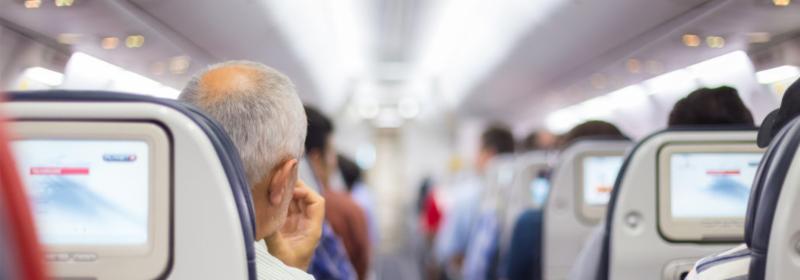GSS sensors to be used in cabin air quality project

CO2 sensing technology developed by Gas Sensing Solutions (GSS) will play a key role in a UK Government funded research programme called U-CAIR (UK ATI Cabin Air) to improve aircraft cabin air quality.
GSS's sensors measure how much light is absorbed by CO2 molecules in the 4.2 and 4.4 microns range in a technique known as Non-Dispersive Infra Red (NDIR) absorption. The amount of absorption indicates how much CO2 is present. GSS developed proprietary fast switching LEDs that are specifically tuned to emit at these wavelengths but using very little power. Sensor readings can be made in less than a second with batteries lasting ten years.
The U-CAIR project, led by Honeywell in partnership with the UK's National Physical Laboratory, Gas Sensing Solutions and SST Sensing, is developing cabin air sensor technology to improve passengers' cabin experience. The project will not only create an improved passenger experience in large passenger aircraft, business jets and regional aircraft, but also allow for further fuel savings of up to 2000 litres on long haul flights. Receiving a grant of £2.3 million, this project will enable the UK to develop key technologies that will lead the market in passenger-friendly aircraft. This is part of the £3.9 billion that government and industry will have committed to the aerospace sector by 2026.
The project is driven by the increasing awareness of the effects that even slightly elevated levels of CO2 can have on health, which start with yawning and drowsiness and become progressively worse as levels rise. If a room feels stuffy that is not due to lack of oxygen but CO2 levels increasing to the point where it is starting to have an affect.
In an aircraft with hundreds of people all breathing out CO2, the level could quickly rise so the air has to be changed to remove it. Changing the air uses energy to pump low-pressure air in from outside the aircraft, then pressurise and warm it for the cabin. This energy comes from burning aircraft fuel, so the aim of this project is to monitor the level of CO2 in the cabin to match the air change to what is actually required. This can provide significant savings in fuel use and reduce carbon footprints.
Calum MacGregor, CEO of GSS, explained: "Our unique CO2 sensor technology has been selected for this project because of its industry leading features of low power, accuracy and immunity to vibration. Plus, our sensors are very robust with a long service life, making them the perfect choice for the challenging environment of vibration, pressure changes, etc. in an aircraft where they must work reliably for many years. This project is one of many that we are involved in where we develop a custom solution that precisely meets the needs of the customer."


































